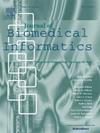Bioinformatic challenges in metagenomic next generation sequencing data analysis while unravelling a case of uncommon campylobacteriosis
IF 4.5
2区 医学
Q2 COMPUTER SCIENCE, INTERDISCIPLINARY APPLICATIONS
引用次数: 0
Abstract
Objective
This study aimed to employ advanced bioinformatics and modern sequencing approaches to solve a diagnostic problem of persistent Campylobacter spp. molecular detection yet negative culture results from four consecutive stool samples of a previously healthy patient with newly diagnosed selective IgA deficiency and prolonged diarrhoea.
Methods
Metagenomic next-generation sequencing (mNGS) based on short-paired end reads with basic bioinformatic read classification analysis was used at first. Due to ambiguous results, advanced bioinformatics involving contigs construction and classification, reference genome mappings and reads filtering with BBSplit, additionally coupled with metagenomic long-reads sequencing and Full-length 16S rRNA metabarcoding were employed to further elucidate the results. Virulence factors were analysed using the Prokka Genome Annotation tool. Modified classical bacteriology methods were finally used for further clarification.
Results
Short-pair end reads analysis identified several Campylobacter species in all four samples. After advanced bioinformatic approaches were applied, candidatus C. infans was suspected as the putative pathogen. This result was further supported by metagenomic long-reads sequencing and Full-length 16S rRNA metabarcoding. Nevertheless, after modifying the culture conditions based on mNGS results, a mixed culture of candidatus C. infans and C. ureolyticus was obtained. Sequencing of the mixed culture resulted in an 87.48% and 73.47% genome coverage of candidatus C. infans and C. ureolyticus, respectively. In the candidatus C. infans genome more virulence factors hits were found than in the C. ureolyticus genome thus supporting the first as the most probable cause of symptoms.
Conclusion
This study shows the pivotal role and strengths of mNGS in unravelling an unusual case of diarrhoea and demonstrates how mNGS can guide established microbiological methods to improve on current limitations. However, it also emphasises the need for careful interpretation of sequencing data, particularly for closely related bacterial species from clinical samples that are known to support complex microbial communities.

新一代宏基因组测序数据分析中的生物信息学挑战,同时揭示了一例罕见的弯曲菌病
目的利用先进的生物信息学和现代测序技术,解决一名新近诊断为选择性IgA缺乏症和长期腹泻的健康患者连续4个粪便样本的持续性弯曲杆菌分子检测和阴性培养的诊断问题。方法首先采用基于短对末端reads和基本生物信息学reads分类分析的新一代元基因组测序(mNGS)。由于结果不明确,我们利用先进的生物信息学技术,包括contigs构建和分类、参考基因组定位和BBSplit的reads过滤,以及宏基因组长reads测序和全长16S rRNA元条形码来进一步阐明结果。用Prokka基因组注释工具分析毒力因子。最后使用改进的经典细菌学方法进行进一步澄清。结果短对端读分析鉴定出4种弯曲杆菌。应用先进的生物信息学方法后,候选C.婴儿被怀疑为假定的病原体。这一结果进一步得到了宏基因组长读测序和全长16S rRNA元条形码的支持。然而,在根据mNGS结果修改培养条件后,获得了候选C.婴儿和C.溶尿球菌的混合培养。混合培养的测序结果显示,候选C.婴儿和C.溶尿菌的基因组覆盖率分别为87.48%和73.47%。在候选C.婴儿基因组中发现的毒力因子命中比在解尿C.球菌基因组中发现的毒力因子命中更多,从而支持前者是最可能的症状原因。本研究显示了mNGS在揭示罕见腹泻病例中的关键作用和优势,并展示了mNGS如何指导已建立的微生物学方法来改进目前的局限性。然而,它也强调需要仔细解释测序数据,特别是对于来自临床样本的密切相关的细菌物种,这些细菌已知支持复杂的微生物群落。
本文章由计算机程序翻译,如有差异,请以英文原文为准。
求助全文
约1分钟内获得全文
求助全文
来源期刊

Journal of Biomedical Informatics
医学-计算机:跨学科应用
CiteScore
8.90
自引率
6.70%
发文量
243
审稿时长
32 days
期刊介绍:
The Journal of Biomedical Informatics reflects a commitment to high-quality original research papers, reviews, and commentaries in the area of biomedical informatics methodology. Although we publish articles motivated by applications in the biomedical sciences (for example, clinical medicine, health care, population health, and translational bioinformatics), the journal emphasizes reports of new methodologies and techniques that have general applicability and that form the basis for the evolving science of biomedical informatics. Articles on medical devices; evaluations of implemented systems (including clinical trials of information technologies); or papers that provide insight into a biological process, a specific disease, or treatment options would generally be more suitable for publication in other venues. Papers on applications of signal processing and image analysis are often more suitable for biomedical engineering journals or other informatics journals, although we do publish papers that emphasize the information management and knowledge representation/modeling issues that arise in the storage and use of biological signals and images. System descriptions are welcome if they illustrate and substantiate the underlying methodology that is the principal focus of the report and an effort is made to address the generalizability and/or range of application of that methodology. Note also that, given the international nature of JBI, papers that deal with specific languages other than English, or with country-specific health systems or approaches, are acceptable for JBI only if they offer generalizable lessons that are relevant to the broad JBI readership, regardless of their country, language, culture, or health system.
 求助内容:
求助内容: 应助结果提醒方式:
应助结果提醒方式:


